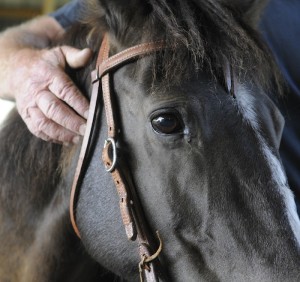 This article originally appeared in Eclectic Horseman, issue 69.
This article originally appeared in Eclectic Horseman, issue 69.
By Maddy Butcher
Look at a typical horseman or woman today. You’ll see the outfit isn’t a whole lot different from generations past. The jeans, button-down shirt, boots, and hat haven’t strayed far from their frontier roots.
It’s only when you look in the jeans’ back pocket, that you might see something new.
There’s a smartphone.
From Campfire to Web Surfing
We’re at a special time in the horse world. The past has given us an inspiring legacy of horsemanship and management. The present gives us access to the latest and greatest of virtually every aspect of horse work.
Are you a Traditionalist?
Or, are you always on the look out for new options?
Many say in today’s world, you can follow tradition AND be progressive. In fact, staying true to your roots while being open to new insights might just optimize your horsemanship skills.
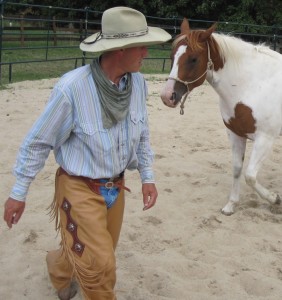 “I’m not a school kid, but I love learning,” said horseman Mike Kevil, who has equal measures of skepticism and curiosity when it comes to new findings. Whether he’s considering a fellow horseman or a science review, Kevil likes to scrutinize beyond the flashy headlines.
“I’m not a school kid, but I love learning,” said horseman Mike Kevil, who has equal measures of skepticism and curiosity when it comes to new findings. Whether he’s considering a fellow horseman or a science review, Kevil likes to scrutinize beyond the flashy headlines.
“Tell me. But tell me Why. If I don’t know the Why, then I won’t apply it the right way. When you know the Why it gets exciting. That’s when the learning takes off.”
Randy Rieman might agree. He’s another horseman who’s excelled by respecting tradition while allowing room for new ideas.
“The best horsemen are humble, open-minded, and intelligent,” said Rieman of his peers. “They’re the best because they are consummate learners.”
But how do you know where to go when the volume of data is overwhelming? What do you believe when the boldest information isn’t always the most reliable?
Academic research can be difficult to find and harder to understand. And great horsemanship often flies under the radar of your typical Google search.
Information on the Internet is like that table full of magazines in a doctor’s waiting room.
Most folks will thumb through entertainment magazines and look at pictures. Those magazines, regardless of their real worth, stay on top. Medical journals, which might just give patients the enlightenment they were looking for, remain buried and unread.
The scientific method – which involves forming a hypothesis, gathering and evaluating data, and producing results – is not an easy concept to grasp. Better-marketed options may get more attention, not because they’re correct, but because people are hired to 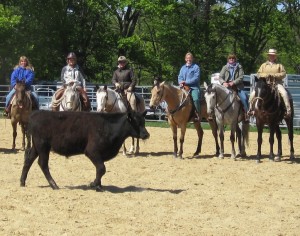 make them easier to understand, more appealing, sexier.
make them easier to understand, more appealing, sexier.
The Internet has allowed us to self-educate, but results have been mixed.
When he first started his equine veterinary practice 24 years ago, Dr. Charles Abraham said his clients “didn’t have a dang clue about anything.” Now, said the Iowa vet, “about 75 percent of them are pretty well-educated. It’s really made a huge difference.”
But self-education comes with pitfalls, too.
Clients sometimes panic after plugging in their horses’ symptoms and confirming Worst Case Scenarios. Others try Do-It-Yourself diagnosis and get things horribly wrong.
“We get a lot more panic calls than we used to. And some clients have a false feeling of being able to diagnose and treat on their own,” said Abraham.
One need look no further than a popular Colorado State University study to see the prominence of online posers. The horse blanket report claimed to examine horses’ capacity to self-regulate, to “loft and layer” their coats. It described how blankets interfere with this process. Seemed to make perfect sense, but it was a complete ruse.
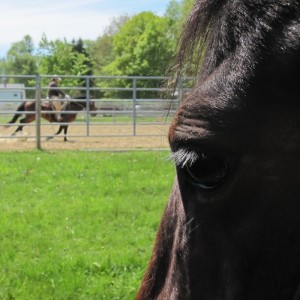 “I am afraid someone has used our name to promote their own opinion,” said Dr. Jerry B. Black, CSU’s Wagonhound Land and Livestock Chair in Equine Sciences.
“I am afraid someone has used our name to promote their own opinion,” said Dr. Jerry B. Black, CSU’s Wagonhound Land and Livestock Chair in Equine Sciences.
Learning how to discriminate between good and bad information isn’t hard.
Start by educating yourself for real. At Colorado State, for instance, students build strong science and business foundations to go along with their horsemanship skills before they graduate.
“We emphasize the blend of science and industry,” said Dr. Black. “That’s how our students hopefully will be future leaders.”
In today’s world, being well-versed in horse sense AND science can be invaluable. Dr. Rebecca Gimenez discovered this the hard way. She was in her early 20s, had grown up with horses, and thought she knew everything. Then, she enrolled in a correspondence course offered by the University of Kentucky.
“I didn’t recognize half the words in the first paragraph,” recalled Gimenez, who now has a PhD in equine science and is president of Technical Large Animal Emergency Rescue, Inc. “I thought, ‘how can I not know all this? I’ve had horses all my life!’”
Now on the other side of the fence, Gimenez sees how handicapped one can be without that science background.
“People are intimidated by research,” said Gimenez. “It’s much easier to listen to quacks. They’re better at selling, but none of their crap has ever been exposed to any rigorous scientific evaluation.”
Kevil, for one, gravitates towards the brass tacks and challenges of science. “I never feel like I have a complete grasp of it, but I’m curious and want to keep progressing,” he said. “I have to read it several times. I lack the vocabulary these researchers use and might need veterinarians to explain it to me in laymen’s terms.”
Horses can be examined on many levels, from cellular to environmental.
If it needs a microscope or x-ray, you’ll need the expertise that goes with the equipment. Be wary of the trainer who claims to know the horse’s chemistry, if he’s never taken a chemistry class.
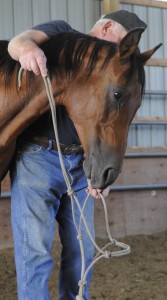 On the flip side, talented horsemen and women may have the edge over scientists when it comes to behavior or common horse sense. The best can read everything from herd movement to tail swishing and make quick assessments based on experiences with hundreds, if not thousands of interactions. “Scientists may miss or ignore the small subtleties, what would be obvious to a horseman,” said Kevil. “If you don’t know what it means, it means nothing.”
On the flip side, talented horsemen and women may have the edge over scientists when it comes to behavior or common horse sense. The best can read everything from herd movement to tail swishing and make quick assessments based on experiences with hundreds, if not thousands of interactions. “Scientists may miss or ignore the small subtleties, what would be obvious to a horseman,” said Kevil. “If you don’t know what it means, it means nothing.”
Whether it’s sense or science, it pays to get as close to the source as possible.
On the Internet, this may mean going to the research, not someone’s biased interpretation of the research. On the ground, it means personal experience. Or, as Kevil said, “You have to go and see for yourself.”
Bryan Neubert got lucky in this vein. He lived right next to Tom Dorrance. He happened upon work with Ray Hunt and Bill Dorrance, too.
“I didn’t know they were gifted. But I knew they knew more than I did,” said Neubert. “In hindsight, I was extremely blessed. I couldn’t have been in a better place anywhere.”
Back then, ‘clinician’ was a new concept and the Internet hardly existed. “I thought a ‘Clinic’ had something to do with a hospital,” recalled Neubert with a laugh.
Where would Tom Dorrance have ended up on the proverbial Waiting Room table top?
Would you have dug deep to find him?
How we shape our future and our horses’ future will be decided, in part, by how well we dig through the Waiting Room selection and whether we know enough to ask the right questions when we finally get to see the doctor.
Anything from the Eclectic Horseman is good!